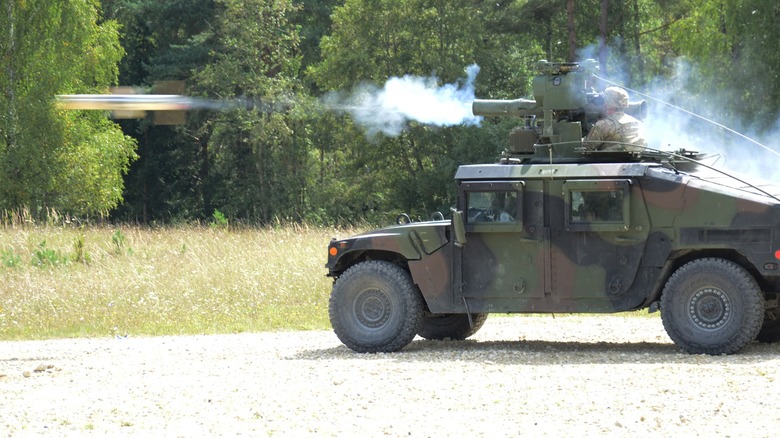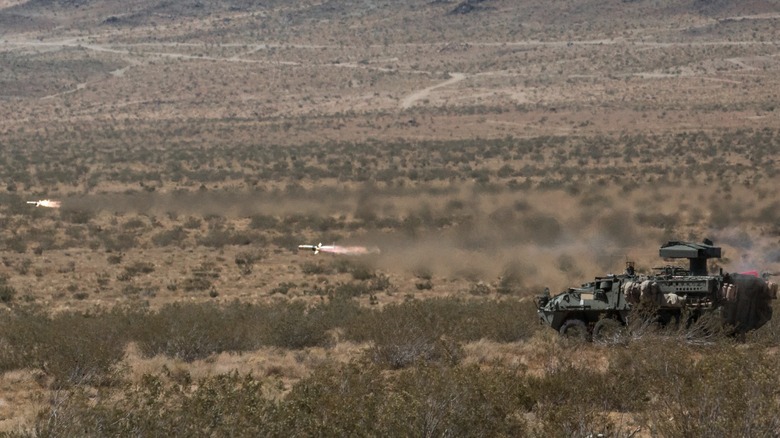Why Do TOW Missiles Have Wires?
When you think of a missile launching, you probably think of a large projectile launching out of a silo and flying up into the sky all on its own. However, that's not the only kind of missile out there; missiles come in all shapes, sizes, and applications, some with little quirks that might not immediately make sense if you don't know what they're intended for. A good example of this is the TOW missile, which is short for "tube-launched, optically-tracked, wire-guided."
With a concept dating as far back as World War II, this particular flavor of missile has a distinctive trait present in both its name and design: a long wire trailing off the back as it flies. Unlike in a long-range missile, which is equipped with a remote guidance system, a short-range missile like a TOW receives its instructions directly from an operator via electrical signals sent through its attached wires.
It might seem strange to have a wire attached to something that's about to explode, but in actuality, attaching a wire to a TOW missile makes it much easier for artillery operators to directly control the missile's trajectory and speed. This, in turn, makes the TOW missile even better at punching through heavily-fortified targets like tanks and bunkers.
The wires are used to control the missile while it flies over a relatively short distance
A long-range missile like an ICBM is equipped with remote guidance because it's flying too far away to be manually controlled. However, a TOW missile has a relatively far shorter range, meant to be fired from a vehicle like a Jeep, helicopter, or an armored vehicle like the M2 Bradley directly at a target no more than a few miles away. Since the missile doesn't need to travel as far, it'd be wasteful to equip it with an elaborate remote guidance system.
When a TOW missile is launched from its tube, a long spool of connected wire unravels behind it as it travels. This wire is connected directly to a manual guidance system on or in the launch vehicle, where an operator can directly control the missile's speed, trajectory, and other miscellaneous tweaks. The wire is just long enough to facilitate the missile's flight to its target and subsequent detonation, giving the operator full, precise control.
TOW missiles are most commonly employed against armored targets, such as tanks and bunkers. The shaped charge warhead mounted onto a TOW is perfect for punching right through thick armor plating, and the direct control afforded by the wires ensures that the warhead won't miss its target. The hard connection also makes it harder to disrupt the missile's aim compared to something with a remote control, and it's thin enough to be hard to spot with the naked eye.

